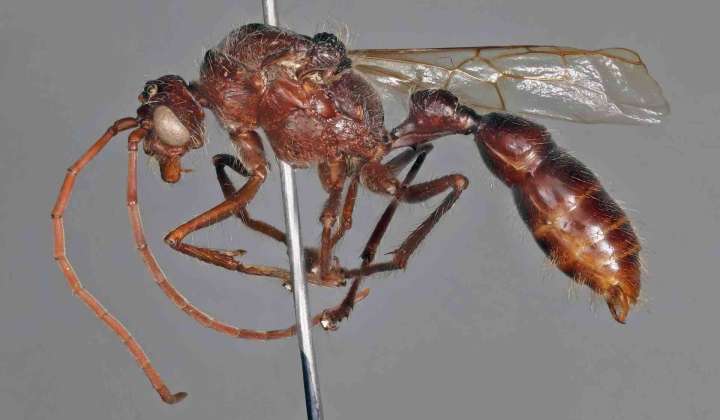Entomology II
Collection
Hymenoptera
The bulk of the collection is formed by Tenthredinidae, Ichneumonidae, Chrysididae, and Apoidea of the western Palearctic. The research activities of the scientific staff are ensuring continued growth and use of the collection. The collection contains at least 9,900 species and types of 982 species, as well as unnamed material, primarily of Ichneumonidae and Apoidea. The collection also includes a lot of completely untreated material collected in different zoogeographical regions (i.e. different islands of the South Seas, collected by N.L.H. Kraus). Through the development under Jens-Peter Kopelke, a large collection of willow gall wasps was established.
Important parts of the collection
- Collection Schenk (1803–1878), received in 1968, containing a total of about 13,750 specimens; only some specimens are labelled. This collection is stored separately.
- Coll. Rebmann (1896–1970): received in 1970, containing a total of about 10,000 specimens including numerous types and paratypes. This material is incorporated into the main collection.
- Coll. Heinrich (1903–1978): acquired in 1977/78, containing primarily Aculeata with main focus on Apoidea, including numerous types. This material is incorporated into the main collection.
- Coll. Wehner (1940–): acquired in XX, with 2,200+ collecting events of the famous desert ant, Cataglyphis. This material is in the main collection, and many well-organized duplicates are in ethanol.
- Coll. Dill (X–): acquired in 2024, containing primarily ants of the genus Dolichoderus. This material will be incorporated in the main collection.
- Coll. Boudinot (1989–): brought to the museum in 2024, containing a broad diversity of Hymenoptera, with emphasis on Formicidae and especially male ants. This collection of dry and ethanol-preserved specimens is kept separate for now.
Cryocollection of Aquatic Insects
We actively maintain a collection of frozen specimens of aquatic insects from Europe, the Himalaya, and the Afrotropical region. The focus is on adult and larval caddisflies (Trichoptera) but also comprises stoneflies (Plecoptera), and mayflies (Ephemeroptera). In total the collection contains 5000 specimens and species series suitable for DNA work and morphological study.



